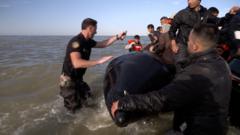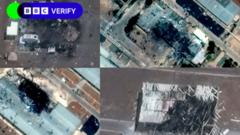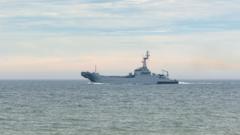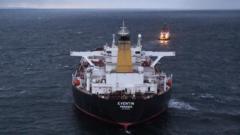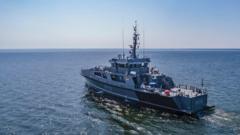The Russian warship Boikiy, equipped with guided missiles, used a fake ID signal to obscure its identity while traveling with two sanctioned vessels. The investigation highlights Moscow's strategic choices in the face of heightened sanctions and military risks in international waters.
"Russian Warship Employs Deceptive Tactics While Accompanying Sanctioned Oil Tankers"
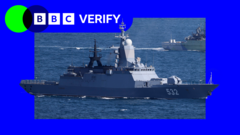
"Russian Warship Employs Deceptive Tactics While Accompanying Sanctioned Oil Tankers"
A recent investigation reveals a Russian corvette disguised its identity while escorting two sanctioned oil tankers through the English Channel.
A Russian warship, the Boikiy—a guided missile corvette—was found to be using deceptive tactics while navigating through the English Channel alongside two sanctioned oil tankers, per findings from a BBC Verify investigation. The ship transmitted a false radio ID signal, misleading tracking systems into identifying it as other vessels that had previously used the same identification. The investigation combined satellite imagery, tracking data, and video footage, confirming that the signal corresponded to the Boikiy.
The presence of the Boikiy along with the tankers, known as part of Russia’s "shadow fleet," raises questions about Moscow's military maneuvers. This network of tankers is often utilized to transport oil products subject to international sanctions, making the participation of a corvette particularly noteworthy. Observations underscore a potential shift in strategy, with experts suggesting that Russia’s military might be deployed to screen these vessels amid increasing Western interventions against them.
Dmitry Gorenburg from the Center for Naval Analyses remarked that the tactic of using military escorts serves to dissuade NATO countries, including the UK, from intercepting sanctioned oil shipments, with the risk of confrontation heightening under such circumstances. Attention turned to the Boikiy earlier on social media thanks to independent intelligence analyst Christian Panton’s work.
The corvette reportedly left West Africa in June after taking part in diplomatic operations, with its whereabouts plotted through various signals and satellite data. While the warship did not activate its Automatic Identification System (AIS), it briefly transmitted a generic signal as it passed the Canary Islands, aligning with its estimated journey from Conakry, Guinea. Analysts noted that camouflaging under another identity is atypical for Russian naval vessels, which usually opt to silence their AIS for anonymity.
As the Boikiy continued its journey, it was joined by the Sierra and the Naxos, two oil tankers with known sanctions against them. These vessels convened at the Channel’s entrance for coordinated passage. The Royal Navy confirmed monitoring the Boikiy during its transit, as satellite images indicated the presence of a military vessel shadowing the corvette. The subsequent trajectory of the three ships remains uncertain, with possibilities ranging from ports in mainland Russia to Kaliningrad, the Russian exclave neighboring Poland and Lithuania.
The evolving dynamics around the Russian "shadow fleet" raise concerns over maritime security and the implications of military involvement in global oil transport routes, as attention continues to focus on the international community's efforts to counteract these operations.

